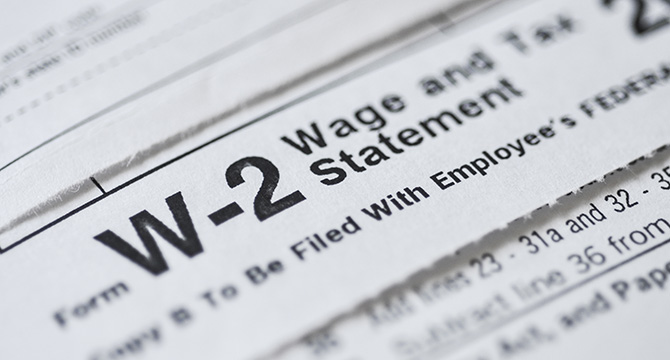How Do I Report Non-Qualified Plan or Severance Payments to a Former Employee? Hint: You Should Probably Use a W-2, Not a 1099!

Employers commonly make payments to former employees for a number of reasons. Two of the more routine payments are those from a non-qualified deferred compensation plan (such as payments from a supplemental executive retirement plan or a 401(k) restoration-type plan) or pursuant to a severance arrangement, and sometimes both. (Other termination- or settlement-type payments, such as those for emotional distress or pain and suffering, are beyond the scope of this article.)
These payments may occur just once in a single sum at or shortly after termination, or the payments may be spread out in installments over the course of many months, and sometimes even years. Because these payments happen after termination, many employers and other persons (including many CPAs), tend to think that such amounts should be reported on some type of Form 1099. But as the title of this article states, that’s often wrong!
Why Using a Form W-2 is Usually Correct
The short answer is that if the employer makes any non-qualified or severance payments to a person that are connected with or result from employee status, then such payments should be reported on Form W-2. That requirement applies regardless of when those payments are made (whether at termination or many years after). In general, such payments only belong on a Form 1099-MISC if the individual earned or became entitled to those amounts as a result of non-employee status, such as service as a non-employee director or independent contractor. To the extent someone provided service as an employee and non-employee, perhaps during different periods of time with the employer, then further analysis is needed, but the test remains the same: payments for employment belong on the W-2, and payments for non-employment, such as an independent contractor, belong on the 1099. Fortunately, such dual status happens infrequently.
Why You Should Care
The short answer here? Because the government cares. And the government cares because it wants its money, both FICA and income taxes, as soon as it can get it. If payments are incorrectly reported on a 1099, then generally no taxes are withheld, and the government must wait for the person to not only file an income tax return, but to pay the taxes due. Depending on the facts (when the payments are made and when the person files), such taxes may be delayed for nearly two years. If, however, payments are correctly treated as wages to be reported on a W-2, then withholding generally occurs as payments are made; the government gets its money, and it gets that money quickly.
To keep the government happy (and your company out of trouble), here are three practice pointers to help you stay on track.
Practice Pointer 1: Determine the Type of Payment and its Underlying Services
- As noted above, payments from non-qualified plans and severance arrangements relating to employee service go on the W-2, and payments relating to non-employee service (e.g., a non-employee director or other independent contractor) go on the 1099.
- Notably, a former employee or contractor may have other payments as well, such as those from a qualified retirement plan, such as a 401(k) or 403(b) plan, an employee stock ownership plan (ESOP), or a defined benefit pension plan, all of which generally belong on Form 1099-R, regardless of employee status (as noted on that Form 1099-R and its corresponding instructions).
Practice Pointer 2: Review the IRS Forms and Instructions, but Review Them Carefully
- The IRS forms and instructions for the forms W-2, 1099-MISC, and 1099-R all provide helpful direction on reporting different payments, but employers must review both the shorthand instructions included on those forms and the greater detail contained in the separate stand-alone instructions.
- As with any IRS guidance, employers should review the forms and instructions carefully. For example, the instructions for Form 1099-R note that for non-qualified plan payments, “[they] are reportable on form 1099-MISC” for “non-employees.” As discussed in this update, however, the reference to “non-employees” means directors or other independent contractors, not former employees.
Practice Pointer 3: Talk With Your Payroll and the Person at Issue, Early On if You Can
- Make sure your payroll department or vendor knows what to do. Sometimes, the payroll department pushes back on giving a W-2 to someone who has long since terminated employment. But timing doesn’t change the answer. And if a payroll record no longer exists but is needed, then one should be created using the best information available.
- It may also prove helpful to let the person know what will happen, preferably before payment ends but as soon as possible, no matter what. Employers should avoid surprises. Let the person know about how the employer intends to withhold taxes from, and report, the payment and the reasons why, especially if that reporting may continue years into the future.
